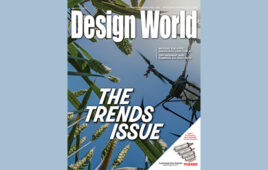A snapshot of the additive industry
It’s always interesting to examine who, how, and why engineers are using additive manufacturing (AM). Recently Stratasys Direct Manufacturing and SME Media conducted a survey on engineers and designers’ experiences with AM . The respondents either currently use or are considering using additive manufacturing.
Of the nearly 700 respondents, 24% make consumer products, 17% off er design services, 16% are involved in medical, 15% are involved in industrial equipment, 15% are in aerospace, and 12% are in transportation.
So, how do these respondents use 3D printers? According to the survey, most (35%) use a 3D printing service provider. However, 28% own industrial 3D printers and 32% own desktop printers. Only 4% are not currently using 3D printing or additive manufacturing.
While the choice of which additive technology depends on the project, about 25% of the respondents choose material Jetting including PolyJet technology, with a second 25% choosing photopolymerization, which includes stereolithography. The other technology mentioned was plastic powder bed fusion (also known as laser sintering) at 19%.
A lot of commentary covers the benefi ts of using additive manufacturing (AM), but what do the respondents see as the most signifi cant benefi t of this technology? For 33%, it was the freedom to develop highly complex designs. The speed of design and development came in second at 26%, while freedom to customize a design was at 10%. Specifi cally in aerospace markets, these benefi ts are key. For medical and consumer product development, 25% and 32% respectively of the respondents viewed speed as the top benefi t; primarily to get products to market fast.
Of course, with benefi ts comes drawbacks or challenges. 19% of the respondents listed obtaining good part quality as a challenge, while 13% mentioned the need for production consistency and reliability. For 16% it was the cost of operation, with balancing pricing and operational costs at 14%.
One challenge taking the focus for the fi rst time was concern for mechanical properties with 3D printed parts. About 26% of the respondents (primarily in aerospace and medical industries) want assurances that 3D printed parts meet the standards and needs of an application.
Even so, 98% of the survey’s respondents say they will use 3D printing in 2020. Of this group, 75% said they plan on using this technology more than they used it in 2019. Those in the aerospace and consumer product industry will likely use this technology the most.
One of the issues around additive that comes up a lot is the need for education in AM. Interestingly, the survey indicates that the need for education is lessening. In 2015, 40% of respondents felt education was important. In 2019, that fi gure has dropped a bit to 36%.
AM is known for functional prototypes and concept modeling. However, a key application today is manufacturing aids with 39% of the respondents mentioning it. For many, manufacturing aids are seen as a growth opportunity. The return on investment in this area is high. One reason is that AM can deliver jigs and fi xtures that previously could not exist because of other technologies geometry limitations. Plus, when compared to other methods of producing manufacturing aids, 3D printed ones can be light weight, printed as-needed, and customized with less lead time.
Leslie Langnau
Managing Editor
[email protected]
Filed Under: DIGITAL ISSUES • DESIGN WORLD




